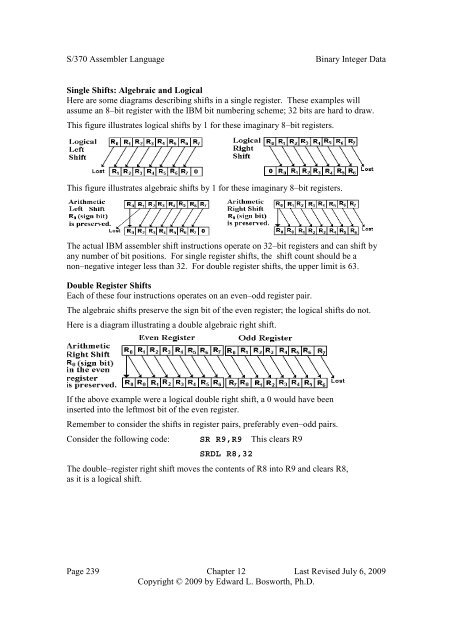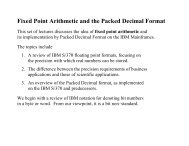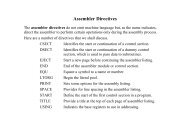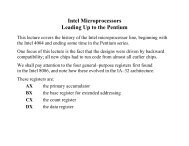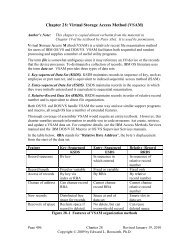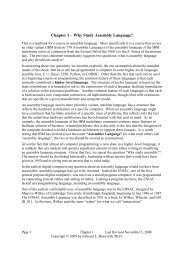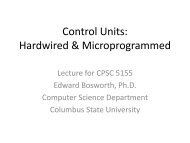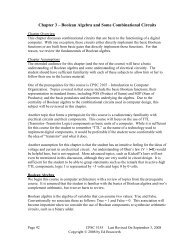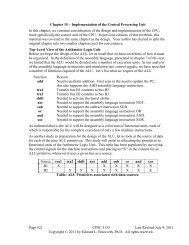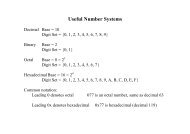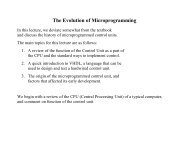PDF Version - Edwardbosworth.com
PDF Version - Edwardbosworth.com
PDF Version - Edwardbosworth.com
You also want an ePaper? Increase the reach of your titles
YUMPU automatically turns print PDFs into web optimized ePapers that Google loves.
S/370 Assembler Language Binary Integer Data<br />
Single Shifts: Algebraic and Logical<br />
Here are some diagrams describing shifts in a single register. These examples will<br />
assume an 8–bit register with the IBM bit numbering scheme; 32 bits are hard to draw.<br />
This figure illustrates logical shifts by 1 for these imaginary 8–bit registers.<br />
This figure illustrates algebraic shifts by 1 for these imaginary 8–bit registers.<br />
The actual IBM assembler shift instructions operate on 32–bit registers and can shift by<br />
any number of bit positions. For single register shifts, the shift count should be a<br />
non–negative integer less than 32. For double register shifts, the upper limit is 63.<br />
Double Register Shifts<br />
Each of these four instructions operates on an even–odd register pair.<br />
The algebraic shifts preserve the sign bit of the even register; the logical shifts do not.<br />
Here is a diagram illustrating a double algebraic right shift.<br />
If the above example were a logical double right shift, a 0 would have been<br />
inserted into the leftmost bit of the even register.<br />
Remember to consider the shifts in register pairs, preferably even–odd pairs.<br />
Consider the following code:<br />
SR R9,R9 This clears R9<br />
SRDL R8,32<br />
The double–register right shift moves the contents of R8 into R9 and clears R8,<br />
as it is a logical shift.<br />
Page 239 Chapter 12 Last Revised July 6, 2009<br />
Copyright © 2009 by Edward L. Bosworth, Ph.D.


